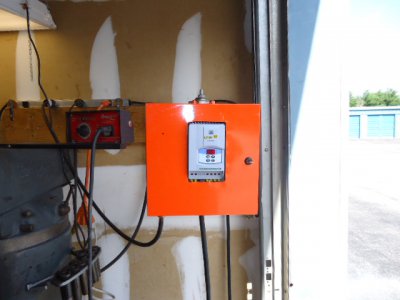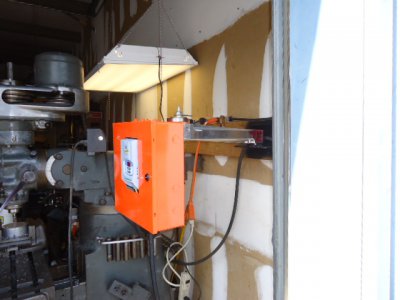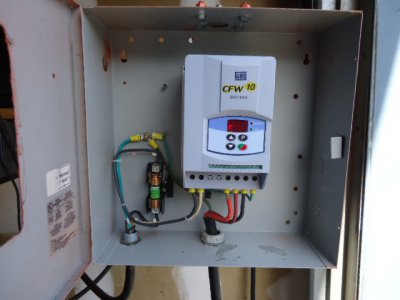- Joined
- Mar 10, 2012
- Messages
- 224
I'm trying a KB electronics VFD for drill press capable of speed variance and fwd/rev. KB(Galco) sells a simple VFD for $135 to turn 110v in 3 phase. The motor is a 3 phase/1 hp/ 60 hz/ 1725 century motor. It was $55 delivered on Ebay.
Just pulled the motor apart, cleaned it, lubed the shield bearings and painted it for use. I installed a 1/8" steel mounting plate w/ 4 hardened 10-24 button heads into the motor case. Also removed the end wiring cover and inside plastic shield. Won't need it as wiring is side-exited. The open hole will be wire guard shielded for computer fan cooling. Low speed reduces cooling, they recommend a 100 cfm ($10) computer fan for continuous cooling.
Now the site is back, I'll collect some pics and post. Still need to bench wire it for a test, then mount up for final use. KB electronics offers excellent phone support for questions. The manual answers most of them up front.
Bill in Idaho used DC treadmill motors for this purpose. That still might be the best route, but the Century will bolt up to existing mount. We still have to see if it delivers the goods.
Later.
Thanks to admin for getting HM on line.
Just pulled the motor apart, cleaned it, lubed the shield bearings and painted it for use. I installed a 1/8" steel mounting plate w/ 4 hardened 10-24 button heads into the motor case. Also removed the end wiring cover and inside plastic shield. Won't need it as wiring is side-exited. The open hole will be wire guard shielded for computer fan cooling. Low speed reduces cooling, they recommend a 100 cfm ($10) computer fan for continuous cooling.
Now the site is back, I'll collect some pics and post. Still need to bench wire it for a test, then mount up for final use. KB electronics offers excellent phone support for questions. The manual answers most of them up front.
Bill in Idaho used DC treadmill motors for this purpose. That still might be the best route, but the Century will bolt up to existing mount. We still have to see if it delivers the goods.
Later.
Thanks to admin for getting HM on line.



